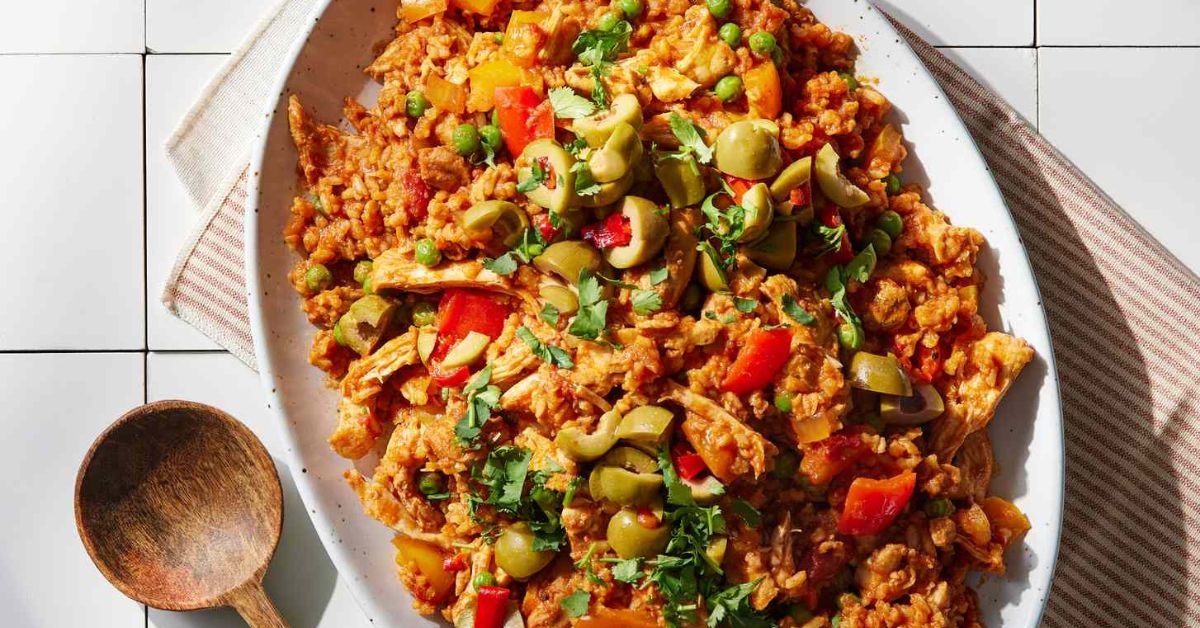Ever wish you could make a delicious, home-cooked meal without spending hours in the kitchen? Slow cooker arroz con pollo (rice with chicken) is the answer—a comforting, one-pot dish bursting with Latin flavors, minimal prep, and maximum convenience.
In this guide, you’ll discover:
✔ Why slow cooker arroz con pollo is a game-changer
✔ Step-by-step instructions for the perfect dish
✔ Pro tips for enhancing flavor and texture
✔ Variations to suit different tastes
Why Slow Cooker Arroz con Pollo is a Must-Try
Arroz con pollo is a beloved dish across Latin America and Spain, traditionally made on the stovetop. But using a slow cooker offers three key advantages:
-
Hands-Off Cooking – No stirring, no burning—just set it and forget it.
-
Tender, Juicy Chicken – Slow cooking ensures perfectly moist meat.
-
Rich, Developed Flavors – Spices meld together beautifully over time.
According to America’s Test Kitchen, slow cookers excel at breaking down tough cuts of meat while infusing grains (like rice) with deep, savory flavors—making them ideal for this dish.
Ingredients You’ll Need
Core Ingredients
-
1.5 lbs chicken thighs (bone-in, skin-on for best flavor)
-
1.5 cups long-grain white rice (avoid instant rice)
-
2 cups chicken broth (low-sodium recommended)
-
1 can (14 oz) diced tomatoes (with juices)
-
1 bell pepper, diced
-
1 onion, diced
-
3 garlic cloves, minced
-
1 tsp cumin
-
1 tsp paprika
-
1 tsp turmeric or saffron (for color)
-
Salt & pepper to taste
-
1/2 cup frozen peas (added at the end)
Optional Flavor Boosters
-
Olives (for a briny kick)
-
Cilantro & lime (fresh garnish)
-
A splash of beer or white wine (degreasing & depth)
Step-by-Step Cooking Instructions
1. Prep the Chicken
-
Pat chicken dry and season generously with salt, pepper, cumin, and paprika.
-
For extra flavor, brown the chicken in a skillet (3-4 mins per side) before adding to the slow cooker. (Optional but recommended!)
2. Layer Ingredients in the Slow Cooker
-
Add onions, bell peppers, garlic, rice, tomatoes, and broth.
-
Stir gently to combine (avoid overmixing).
-
Place chicken on top (skin-side up if using skin-on).
3. Cook on Low for 2.5–3 Hours
-
Do NOT overcook—rice can turn mushy.
-
Check at 2 hours; rice should be tender and liquid absorbed.
4. Finish with Peas & Fresh Herbs
-
Stir in frozen peas (they’ll heat through in 5 mins).
-
Garnish with cilantro and a squeeze of lime.
Expert Tips for the Best Results
✅ Use the Right Rice – Long-grain white rice (like Basmati or Jasmine) holds up best. Avoid short-grain or instant rice.
✅ Don’t Skip the Searing – Browning the chicken adds a caramelized depth you can’t get from slow cooking alone.
✅ Adjust Liquid Carefully – Too much broth = soggy rice. Stick to a 1:1.25 rice-to-liquid ratio.
✅ Avoid Overcooking – Check at 2 hours; if rice is still firm, give it 15 more minutes.
✅ Let It Rest – Allow 10 minutes before serving so flavors meld.
Variations to Try
🌶 Spicy Version – Add diced jalapeños or a pinch of cayenne.
🍋 Citrus Twist – Replace some broth with fresh orange juice.
🍄 Vegetarian Option – Swap chicken for mushrooms and chickpeas.
Common Mistakes to Avoid
❌ Using the wrong rice (instant rice turns to mush).
❌ Overfilling the slow cooker (ingredients won’t cook evenly).
❌ Stirring too much (releases starch, making rice gummy).
Final Thoughts: Why This Dish Wins
Slow cooker arroz con pollo is the ultimate weeknight hero—minimal effort, bold flavors, and a complete meal in one pot. Whether you’re feeding a family or meal prepping, this dish delivers every time.
Ready to try it? Grab your slow cooker, follow these tips, and enjoy a taste of Latin comfort food with zero stress!










